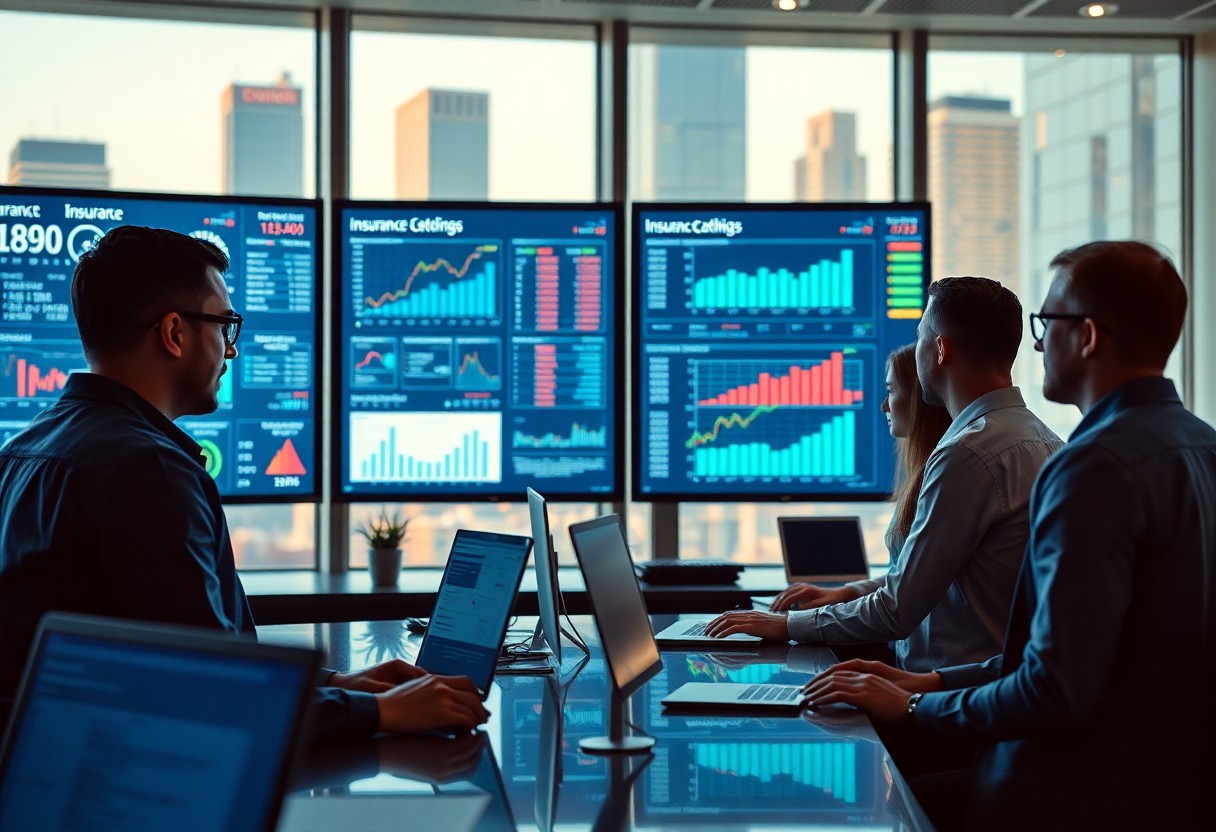Internet Of Things (IoT) – A Glimpse Into A Connected Future Of Automation And Intelligence
Exploring the Internet of Things (IoT) unveils a landscape where devices, machines, and systems seamlessly communicate to enhance efficiency and convenience. In this interconnected realm, automation and intelligence play a pivotal role, shaping our daily lives in ways previously unimaginable. From smart homes that adjust temperature and lighting based on our preferences to industrial systems that optimize production processes in real-time, the potential of IoT is vast and transformative. However, this future also raises concerns about privacy and security, as the vast amounts of data exchanged between devices could be vulnerable to cyber threats. Understanding the power and risks of IoT is essential as we embrace this paradigm shift towards a more connected, automated world.
The Architecture of IoT
Sensors and Actuators
Before delving into the intricacies of IoT architecture, it is crucial to understand the fundamental components that drive the system. The sensors act as the data collectors in IoT, perceiving changes in the environment surrounding them. Conversely, actuators are responsible for executing actions based on the information received from sensors, thereby enabling automation.
Architecture in IoT heavily relies on the synergy between sensors and actuators. Sensors detect variables such as temperature, light, motion, or proximity, converting them into electrical signals. These signals are then processed by the system to trigger actuators, allowing them to perform designated tasks. This seamless interaction between sensors and actuators forms the backbone of IoT architecture.
Connectivity and Data Processing
Architecture in IoT also encompasses the connectivity and data processing aspects that are essential for seamless operation. Connectivity serves as the bridge between devices, enabling communication and data exchange. Data processing involves the analysis of the vast amounts of data collected by sensors, extracting valuable insights to inform decision-making processes.
Plus, data processing in IoT involves real-time analysis, predictive modeling, and machine learning algorithms to enhance efficiency and enable autonomous decision-making. This sophisticated data processing capability ensures that IoT systems can adapt to dynamic environments and optimize performance in real-time.
Applications and Use Cases
Smart Homes and Consumer Devices
The Internet of Things has brought forth a world where our homes and consumer devices are becoming smarter and more interconnected than ever before. The integration of IoT technology into everyday objects and appliances has revolutionized the way we interact with our living spaces. Smart thermostats, lighting systems, security cameras, and voice-activated assistants are just a few examples of IoT-enabled devices that have made our lives more convenient and efficient.
The ability to remotely control and automate various functions within our homes has not only increased convenience but also enhanced energy efficiency and security. Smart home devices can learn from our behaviors and adapt to our preferences, creating a personalized and seamless living experience. With the continued growth of IoT technology, the possibilities for smart homes are endless, promising a future where our environments are truly responsive and intelligent.
Industrial Automation and Smart Cities
With the proliferation of IoT technology, industries and municipalities are experiencing a transformation towards industrial automation and smart cities. With the help of IoT sensors and data analytics, factories can streamline operations, monitor equipment health in real-time, and predict maintenance needs before breakdowns occur. Smart cities are leveraging IoT to optimize traffic flow, reduce energy consumption, and improve public services, ultimately enhancing the quality of life for residents.
Homes interconnected systems and devices are enabling unprecedented levels of connectivity and convenience in our lives. The integration of IoT technology in various aspects of our daily routines is paving the way for a more efficient, intelligent, and automated future. It is crucial for individuals and organizations to understand the potential of IoT and its implications on our society as we move towards a more connected and automated world.

Challenges and Considerations
Security and Privacy Concerns
The proliferation of connected devices in the Internet of Things (IoT) ecosystem brings forth a myriad of security and privacy concerns. The growing network of interconnected devices creates multiple entry points for cyberattacks, raising the risk of data breaches, unauthorized access, and manipulation of sensitive information. Additionally, the constant stream of data generated by IoT devices opens up possibilities for invasions of privacy, as personal information may be collected and utilized without consent.
The challenge lies in implementing robust security measures to safeguard IoT ecosystems against potential threats. Security protocols and encryption methods must be prioritized to ensure data integrity and confidentiality. Furthermore, raising awareness among users about the importance of personal data protection is crucial in fostering a secure IoT environment.
Standards and Interoperability
Challenges pertaining to standards and interoperability are prevalent in the IoT landscape. The absence of universal protocols and guidelines hinders seamless communication and integration among diverse IoT devices. Standards such as communication protocols, data formats, and interfaces need to be established to enable interoperability and streamline the deployment of IoT solutions.
To address the issue of standards and interoperability, industry stakeholders must collaborate to develop unified frameworks and protocols that ensure compatibility across different devices and platforms. The establishment of common standards will not only enhance efficiency and scalability but also promote innovation and drive the growth of the IoT industry.
The Future of IoT
Unlike a standalone technology, the Internet of Things (IoT) is rapidly evolving, shaping a connected future that promises unprecedented levels of automation and intelligence. As IoT continues to mature, its future holds dazzling possibilities and transformative outcomes across various sectors.
Emerging Trends and Technologies
For the future of IoT, emerging trends and technologies such as edge computing, 5G networks, AI, and blockchain are playing a crucial role in enhancing the capabilities and scalability of IoT systems. Edge computing allows data processing to be closer to the source, reducing latency and increasing efficiency in IoT applications. The rollout of 5G networks is set to revolutionize IoT connectivity by providing high-speed, low-latency connections for a massive number of devices, enabling real-time data processing and analysis.
AI integration within IoT devices and platforms is driving intelligent automation, predictive analytics, and enhanced decision-making capabilities. Blockchain technology is ensuring secure and transparent data transactions, enhancing trust and reliability in IoT ecosystems. These technologies collectively are set to propel IoT to new heights of innovation and efficiency.
Impact on Society and the Economy
Future projections indicate that the widespread adoption of IoT could bring about significant changes in society and the economy. Connected devices and systems have the potential to revolutionize healthcare, transportation, agriculture, and urban planning, enhancing efficiency, productivity, and sustainability. However, the increasing dependency on IoT for critical functions raises concerns about privacy, security, and data governance.
Economically, IoT is forecasted to create new business models, generate job opportunities, and drive economic growth through increased productivity and innovation. Nonetheless, issues such as cybersecurity threats, data breaches, and regulatory challenges must be addressed to ensure the sustainable growth and societal benefits of the IoT ecosystem.
Final Words
With this in mind, the Internet of Things (IoT) offers a glimpse into a connected future of automation and intelligence. As more devices and systems become interconnected, the potential for increased efficiency, convenience, and innovation grows exponentially. However, this interconnectedness also brings about new challenges related to security, privacy, and ethical concerns. It is essential for individuals, businesses, and policymakers to actively address these issues and work towards establishing guidelines and standards to ensure the responsible and secure deployment of IoT technologies. Embracing the possibilities that IoT presents while also being mindful of the risks will be crucial in realizing the full potential of this transformative technology in shaping the future landscape of automation and intelligence.
FAQ
Q: What is the Internet of Things (IoT)?
A: The Internet of Things (IoT) refers to a network of connected devices that communicate and share data with each other over the internet, enabling automation and intelligent decision-making.
Q: How does IoT technology work?
A: IoT devices are embedded with sensors and software that enable them to collect and exchange data. This data is then analyzed and used to trigger actions or provide insights, creating a seamless network of interconnected devices.
Q: What are the benefits of IoT?
A: IoT offers numerous benefits, including increased efficiency through automation, improved decision-making through real-time data analysis, enhanced convenience for users, and the potential for cost savings in various industries.
Q: What are some examples of IoT applications?
A: IoT technology is used in various industries, such as smart home devices like thermostats and security cameras, wearable fitness trackers, connected cars with built-in navigation systems, and smart cities that monitor and manage infrastructure like traffic lights and waste disposal.
Q: What are the potential challenges and risks associated with IoT?
A: Challenges with IoT include concerns about data privacy and security, interoperability issues between different devices and platforms, the need for standardization and regulations, as well as potential risks of cyber attacks and data breaches in a connected ecosystem.
![]()













